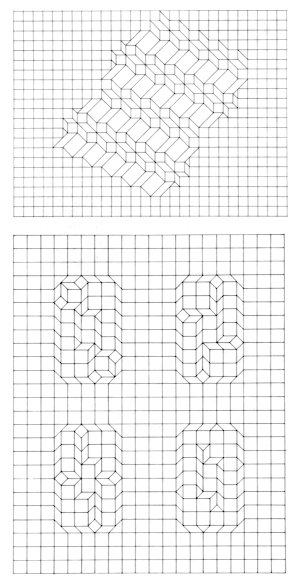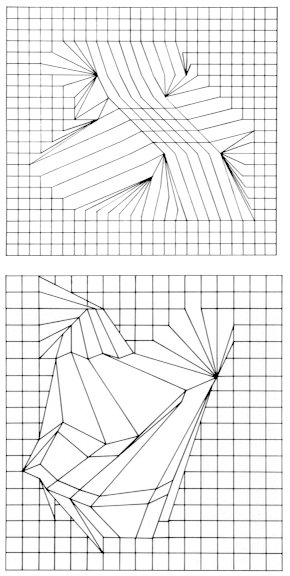|
(iv) Oblique projection diagrams In the oblique projection, the shape which appears
in the foreground is expressed by the actual shape. Therefore, if a cube
is assumed to be placed on a lattice, the square which is the front surface
coincides with the unit lattice. Therefore, only the oblique lines which
express depth are to be devised in this case to express a cube.
(v) Use of long oblique lines Let's use long oblique lines freely and try to change the image of the lattice drastically. However, it is not good if the diagram of the modified part is isolated from the whole. Therefore, it is necessary to note that the introduction part seems to continue from the square lattice to the oblique lines as smoothly and naturally as possible. KOHSEI (Basic Art & Design) of a new type
of three-dimensional effect is possible to be created by proceeding the
above deformation.
|

